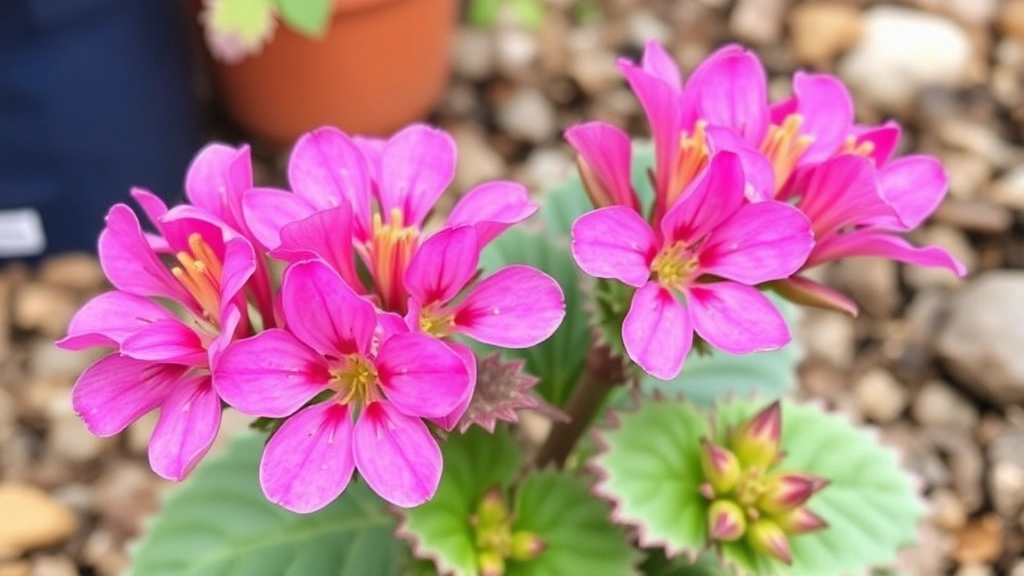Kalanchoe Daigremontiana: Medicinal Uses
If you’re curious about the medicinal uses of Kalanchoe Daigremontiana, also known as Mother of Thousands, you’re in the right place. This remarkable plant is celebrated for its anti-inflammatory, wound-healing, and even potential anti-cancer properties. Many turn to Kalanchoe for natural remedies, leveraging its leaves to treat skin infections, respiratory issues, and muscle pain.
Health Benefits
From soothing sunburns to aiding in muscle relaxation, Kalanchoe Daigremontiana offers a plethora of health benefits. Its traditional uses extend to female reproductive health, making it a versatile addition to natural medicine cabinets.
Important Considerations
However, it’s essential to understand the proper methods of usage and any potential risks to ensure safe and effective treatment.
Have you ever wondered about the healing power of nature? Kalanchoe Daigremontiana, often referred to as the “Mother of Thousands,” is a succulent plant that has garnered attention for its impressive medicinal properties.
## Overview of Medicinal Benefits
Kalanchoe Daigremontiana is celebrated for its diverse range of health benefits, making it a valuable addition to natural medicine cabinets. Here are some key medicinal properties:
– **Antimicrobial Properties**: The plant is known to combat various bacteria and fungi, making it effective against infections.
– **Anti-Inflammatory Effects**: It can help reduce inflammation, which is beneficial for conditions like arthritis.
– **Wound Healing**: The sap of Kalanchoe can accelerate the healing process for cuts and wounds.
– **Pain Relief**: Many use its leaves for natural pain relief, particularly for headaches and muscle aches.
– **Respiratory Support**: Kalanchoe is often employed to alleviate respiratory ailments, including coughs and colds.
– **Potential Anti-Cancer Properties**: Some studies suggest that it may inhibit the growth of certain cancer cells.
These properties make Kalanchoe Daigremontiana a versatile plant in herbal medicine. For those interested in growing this remarkable plant, you might find our [Kalanchoe Mother of Thousands Propagation Guide](https://planthq.org/kalanchoe-mother-of-thousands-propagation-guide/) helpful. Additionally, understanding the [Top Health Benefits of Kalanchoe Mother of Thousands](https://planthq.org/kalanchoe-mother-of-thousands-top-health-benefits/) can provide further insight into its uses.
Using Kalanchoe for Skin Infections and Wound Healing
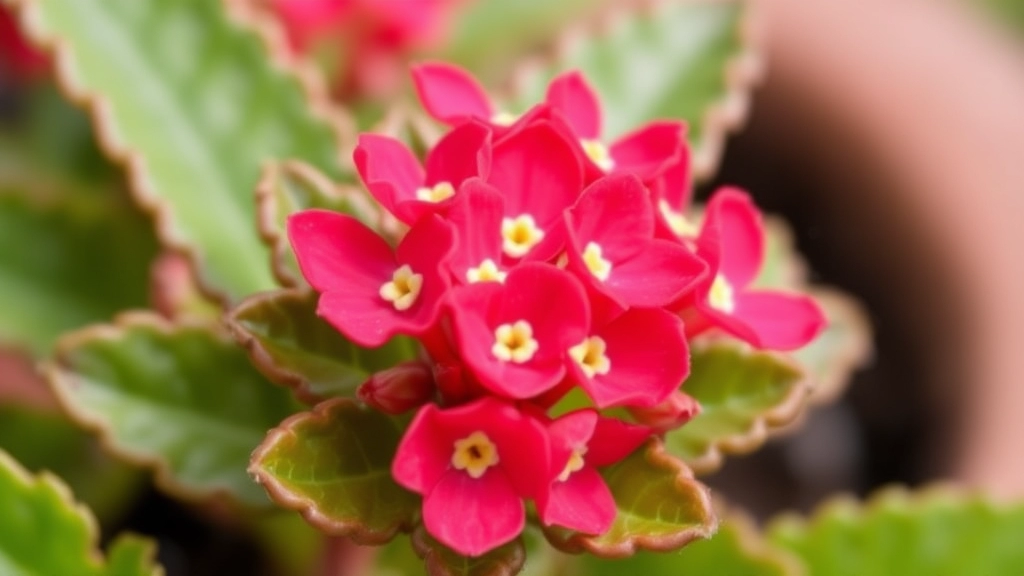
Have you ever dealt with a stubborn skin infection or a wound that just wouldn’t heal? It can be frustrating, right?
Kalanchoe Daigremontiana, often called the “mother of thousands,” might just be the natural remedy you’re looking for.
This plant is packed with properties that can aid in skin infections and promote wound healing. Here’s how:
- Antimicrobial Action: Kalanchoe has natural antimicrobial properties, making it effective against bacteria and fungi. Applying its juice or crushed leaves directly to the affected area can help keep infections at bay.
- Promotes Healing: The plant is known to accelerate the healing process of cuts and abrasions. Its soothing properties can reduce inflammation and encourage skin regeneration.
- Pain Relief: If you’ve got a wound that stings or burns, Kalanchoe can provide relief. Its natural analgesic qualities help ease discomfort.
- Application Tips:
- Crush fresh Kalanchoe leaves to extract the juice.
- Apply it directly to the wound or infected area.
- Cover with a clean bandage for best results.
- Frequency: Repeat this process 2-3 times a day until the infection clears up or the wound heals.
I’ve tried this myself on minor cuts, and the results were impressive.
It’s like having a little pharmacy right in your garden!
But remember, while Kalanchoe is a powerful ally, it’s essential to keep an eye on any infection. If it worsens or doesn’t improve, don’t hesitate to seek professional help.
Anti-Inflammatory Benefits of Kalanchoe
Many people are searching for natural solutions to manage inflammation, whether due to chronic conditions or everyday strains. Kalanchoe Daigremontiana, often referred to as the “mother of thousands,” offers a promising option.
Understanding Inflammation
Inflammation can manifest in various forms, from joint pain to skin irritation. Chronic inflammation is linked to numerous health issues, making effective management crucial.
Kalanchoe’s Anti-Inflammatory Properties
Kalanchoe is rich in flavonoids and other compounds known for their anti-inflammatory effects. These properties make it a valuable ally in combating inflammation naturally.
- Flavonoids: These antioxidants help reduce swelling and pain.
- Triterpenes: Known for their soothing effects, they can alleviate discomfort.
- Saponins: These compounds may assist in reducing inflammation at the cellular level.
How to Use Kalanchoe for Inflammation
Incorporating Kalanchoe into your routine can be straightforward. Here are some suggestions:
- Topical Application: Crush fresh Kalanchoe leaves and apply the paste directly to inflamed areas.
- Infusions: Brew Kalanchoe leaves in hot water to create a soothing tea that may help reduce internal inflammation.
- Compresses: Soak a cloth in Kalanchoe infusion and apply it to sore joints or muscles.
Personal Experience
I’ve seen firsthand how Kalanchoe can provide relief. A friend of mine used it for her arthritis flare-ups and reported noticeable improvements in her symptoms.
For more information on the health benefits of Kalanchoe, you can check out the health and skincare benefits of Kalanchoe Mother of Thousands. Additionally, if you’re interested in the medicinal uses of other Kalanchoe varieties, explore the natural remedies offered by Kalanchoe Pinnata.
Natural Remedies for Pain Relief Using Kalanchoe Leaves

When dealing with pain, whether it’s from a chronic condition or a recent injury, many of us seek effective natural remedies. Kalanchoe Daigremontiana, often referred to as “Mother of Thousands,” has gained attention for its potential pain-relieving properties.
Pain Relief Properties
Kalanchoe leaves are rich in compounds that may help alleviate pain. Here’s how you can harness their benefits:
- Topical Application:
- Crush fresh Kalanchoe leaves to extract the juice.
- Apply the juice directly to the affected area for localised relief.
- Infusion:
- Steep dried Kalanchoe leaves in hot water to create a soothing tea.
- Drink this infusion to help manage internal pain, such as headaches or menstrual cramps.
- Compress:
- Soak a clean cloth in Kalanchoe-infused water.
- Apply the compress to sore muscles or joints for a calming effect.
Anecdotal Evidence
Many users have reported positive experiences with Kalanchoe for pain management. For instance, a friend of mine swears by the topical application after her workouts, claiming it significantly reduces muscle soreness.
Considerations
While Kalanchoe shows promise, it’s essential to approach its use with caution.
- Always perform a patch test to check for allergic reactions.
- Consult a healthcare professional, especially if you are pregnant, nursing, or on medication.
Potential Anti-Cancer Properties of Kalanchoe
As we delve deeper into the remarkable benefits of Kalanchoe Daigremontiana, it’s essential to explore its potential role in combating serious health issues, including cancer.
Many individuals are concerned about natural alternatives to conventional cancer treatments.
Understanding Kalanchoe’s Anti-Cancer Potential
Kalanchoe Daigremontiana, often referred to as the “mother of thousands,” has been traditionally used in various cultures for its medicinal properties.
Emerging research suggests that this succulent may possess anti-cancer properties, making it a topic of interest for both herbalists and medical professionals alike.
Key Components
- Flavonoids: These compounds are known for their antioxidant effects, which may help in reducing oxidative stress linked to cancer development.
- Triterpenes: Some studies indicate that these compounds can inhibit the growth of cancer cells, particularly in breast and colon cancers.
- Alkaloids: These have shown potential in targeting cancerous cells without affecting healthy ones.
Anecdotal Evidence
Many individuals have reported positive experiences using Kalanchoe as a complementary treatment alongside conventional therapies.
For example, some users have shared stories of improved well-being and reduced side effects from traditional treatments when incorporating Kalanchoe into their routines.
How to Use Kalanchoe for Cancer Support
- Juicing: Extract the juice from fresh leaves and consume it daily.
- Topical Applications: Use crushed leaves on affected areas, though this should be done with caution.
- Infusions: Prepare a tea using dried leaves to harness its benefits.
Precautions
While the potential of Kalanchoe is promising, it’s crucial to consult with a healthcare professional before integrating it into any treatment plan.
This ensures that it complements rather than interferes with existing treatments.
For more detailed information on the medicinal uses and health benefits of Kalanchoe Pinnata, you can refer to our comprehensive guide on Kalanchoe Pinnata medicinal uses. Additionally, for a broader understanding of the health benefits and applications of Kalanchoe Pinnata, visit our page on Kalanchoe Pinnata health benefits and uses.
Kalanchoe as a Treatment for Respiratory Ailments
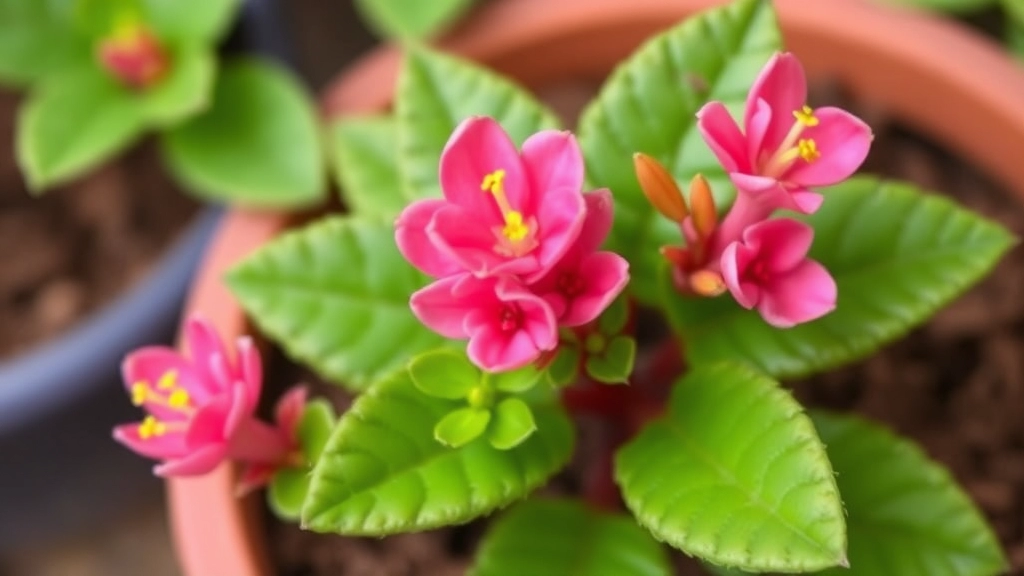
Have you ever found yourself battling a stubborn cough or feeling weighed down by congestion? If so, you might be intrigued by Kalanchoe Daigremontiana and its potential benefits for respiratory health.
Kalanchoe is not just a pretty plant; it’s been traditionally used for various ailments, including respiratory issues. Here’s why it’s worth considering:
Key Benefits of Kalanchoe for Respiratory Health
- Expectorant Properties: Kalanchoe can help clear mucus from your airways.
- Anti-inflammatory Effects: It may reduce inflammation in the respiratory tract, making breathing easier.
- Antimicrobial Action: The plant has natural antimicrobial properties that can help fight off infections.
How to Use Kalanchoe for Respiratory Relief
- Tea: Brew Kalanchoe leaves in hot water for a soothing tea.
- Inhalation: Steaming with Kalanchoe can help ease congestion.
- Topical Application: Some people apply crushed leaves to the chest for relief.
Personal Anecdote
I remember a friend of mine who swore by Kalanchoe when he caught a nasty cold. He would make a tea and say it worked wonders for his cough. While everyone’s experience may vary, it’s a natural remedy worth trying.
Precautions
- Always consult with a healthcare professional before starting any new treatment.
- Ensure you’re not allergic to Kalanchoe.
- Pregnant or breastfeeding women should exercise caution.
Many of us experience muscle tension and joint pain at some point in our lives.
What if I told you that Kalanchoe Daigremontiana could offer some relief?
This remarkable plant has been traditionally used for its therapeutic properties, particularly in alleviating discomfort associated with muscle and joint issues.
### How Kalanchoe Helps
Kalanchoe leaves contain compounds that may help relax muscles and reduce inflammation.
Here are some ways Kalanchoe can be beneficial:
– **Muscle Relaxation**: The anti-inflammatory properties of Kalanchoe can help ease muscle tension, promoting relaxation.
– **Joint Pain Relief**: Applying Kalanchoe topically may reduce swelling and discomfort in the joints, making it a natural alternative for managing arthritis symptoms.
– **Improved Mobility**: Regular use of Kalanchoe may enhance joint flexibility, allowing for better movement and activity levels.
### Practical Applications
To harness the benefits of Kalanchoe for muscle relaxation and joint pain, consider these methods:
– **Topical Application**: Crush fresh Kalanchoe leaves and apply the paste directly to the affected area.
– **Infused Oils**: Create an oil infusion using Kalanchoe leaves, which can be massaged into sore muscles or joints.
– **Herbal Teas**: Drinking tea made from Kalanchoe leaves may provide internal relief, promoting overall wellness.
### Real-Life Example
I once had a friend who struggled with persistent knee pain due to an old injury.
After introducing Kalanchoe into her routine, she noticed a significant reduction in discomfort and an increase in her ability to move freely.
Her experience highlights the potential of Kalanchoe as a natural remedy for joint pain. For more detailed information on the health benefits of Kalanchoe, check out [health benefits of Kalanchoe Pinnata juice](https://planthq.org/health-benefits-of-kalanchoe-pinnata-juice/). Additionally, if you’re interested in learning about the natural remedy potential of Kalanchoe Pinnata for kidney stones, visit [Kalanchoe Pinnata as a natural remedy for kidney stones](https://planthq.org/kalanchoe-pinnata-natural-remedy-for-kidney-stones/).
Healing Sunburn and Other Skin Conditions with Kalanchoe
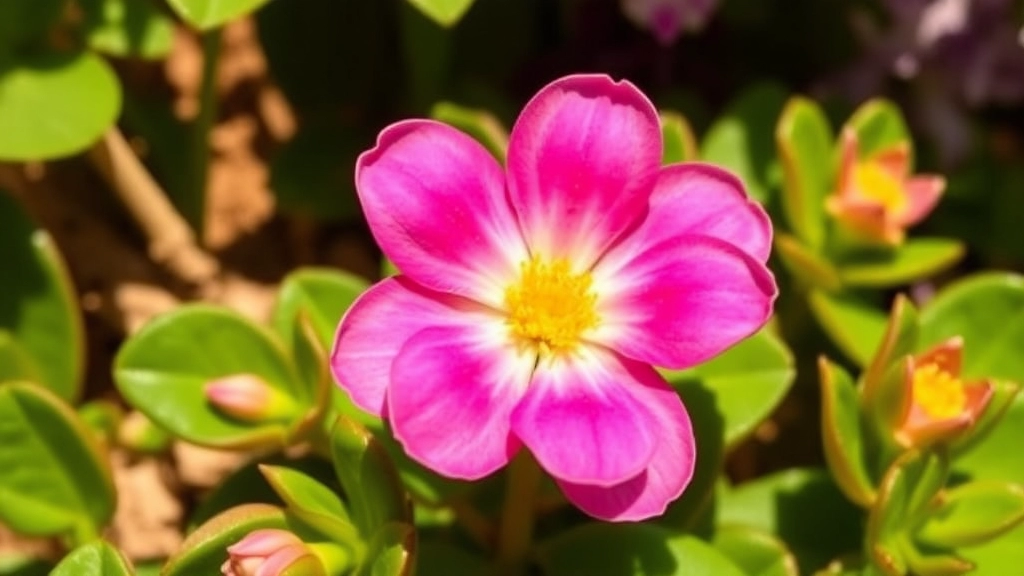
Ever come back from a day in the sun, only to find your skin feeling like a lobster?
Sunburn can be a real pain, and it’s not just about the discomfort. It can lead to peeling, redness, and even long-term skin damage.
But here’s where Kalanchoe Daigremontiana steps in, like a soothing balm for your worries.
This plant is not just a pretty face; it’s got some serious healing power when it comes to skin issues.
Why Kalanchoe for Sunburn?
- Natural Soothing Properties: Kalanchoe has compounds that can calm irritated skin.
- Hydration Boost: The leaves are juicy and can help hydrate your skin, which is crucial when it’s sunburned.
- Anti-Inflammatory Effects: It helps reduce swelling and redness, making it ideal for treating sunburn.
How to Use Kalanchoe for Sunburn:
- Fresh Leaf Application:
- Grab a few fresh leaves.
- Crush them to release the juice.
- Apply directly to the sunburnt area.
- Kalanchoe Gel:
- If you prefer a smoother application, blend the leaves into a gel-like consistency.
- Apply generously to the affected area.
- Mix with Aloe Vera:
- For an extra cooling effect, mix Kalanchoe juice with aloe vera gel.
- This combo is a powerhouse for sunburn relief.
Other Skin Conditions
Kalanchoe isn’t just for sunburn. It can also help with:
- Minor Cuts and Scrapes: Its antimicrobial properties can aid in healing.
- Eczema and Psoriasis: The anti-inflammatory benefits can soothe flare-ups.
- Acne: Its natural astringent qualities can help reduce excess oil and promote clearer skin.
Just imagine lounging by the pool without worrying about sunburn or skin irritations.
Kalanchoe can be your go-to plant for those sunny days and beyond.
Precautions
While Kalanchoe is generally safe, always do a patch test before applying it to larger areas.
Some people may have sensitivities, so it’s best to be cautious.
Traditional Uses of Kalanchoe in Female Reproductive Health
Navigating the complexities of female reproductive health can often feel overwhelming.
Many women seek natural remedies to support their well-being, and Kalanchoe Daigremontiana has been traditionally used for this purpose.
This remarkable plant has been celebrated in various cultures for its potential benefits in addressing reproductive health issues.
Key Benefits of Kalanchoe in Female Health:
- Menstrual Regulation: Kalanchoe is believed to help regulate menstrual cycles, offering relief for those with irregular periods.
- Menopausal Symptoms: Some women have found Kalanchoe helpful in alleviating symptoms associated with menopause, such as hot flashes and mood swings.
- Fertility Support: Traditionally, Kalanchoe has been used to support fertility, though scientific evidence is limited.
- Postpartum Healing: After childbirth, Kalanchoe is thought to aid in recovery and improve overall health.
How to Use Kalanchoe for Female Health:
- Infusions: Steeping Kalanchoe leaves in hot water can create a soothing tea that may help with menstrual discomfort.
- Topical Applications: Applying crushed leaves directly to the skin can promote healing in postpartum recovery.
It’s essential to approach these traditional uses with caution.
While many women have shared positive anecdotes about Kalanchoe, scientific research is still catching up to validate these claims.
For more detailed information on how to care for this plant, check out our care and propagation tips for Kalanchoe Daigremontiana and learn how to maximize its benefits.
Additionally, you might find it useful to explore the health benefits of Kalanchoe Pinnata juice, another variety celebrated for its medicinal properties.
Antimicrobial and Antioxidant Benefits of Kalanchoe
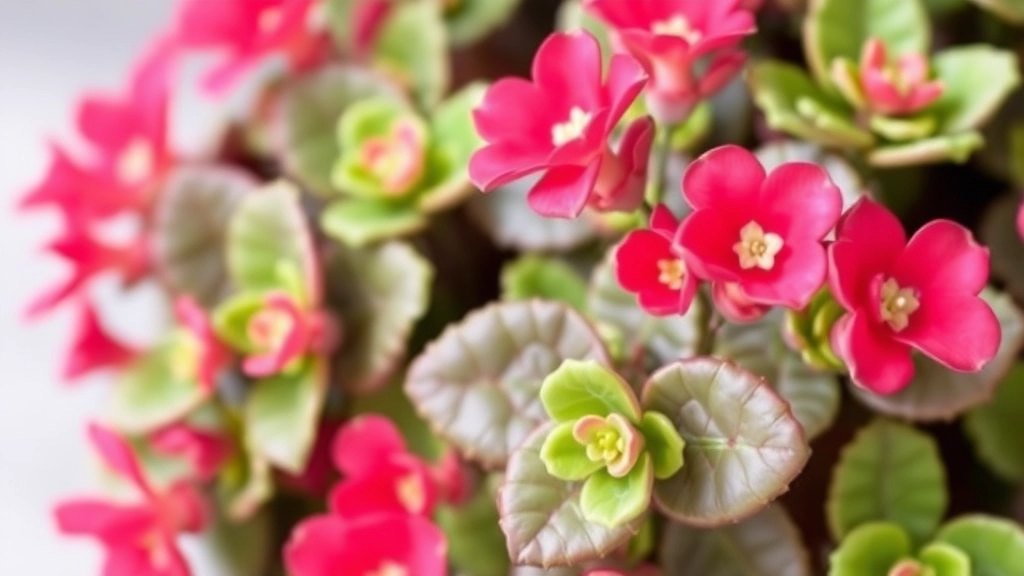
Have you ever wondered if there’s a natural way to boost your immune system and fight off infections?
Kalanchoe Daigremontiana might just be the answer you’re looking for.
This remarkable plant is packed with antimicrobial and antioxidant properties that can help keep you healthy.
Antimicrobial Power
Kalanchoe has been shown to have powerful antimicrobial effects.
Here’s how it can help:
- Fights Bacteria: Studies suggest that Kalanchoe can inhibit the growth of harmful bacteria. This makes it a great option for treating minor infections.
- Combats Fungi: If you’re dealing with fungal infections, Kalanchoe can help as it has antifungal properties too.
- Supports Wound Healing: Applying Kalanchoe extract to wounds can prevent infections and promote faster healing.
Antioxidant Benefits
Now, let’s talk about antioxidants.
Kalanchoe is rich in antioxidants, which are vital for protecting your cells from damage.
Here’s why that’s important:
- Fights Free Radicals: Antioxidants neutralize free radicals, which can lead to chronic diseases and aging.
- Boosts Immune Function: By protecting your cells, antioxidants help your immune system function better.
- Promotes Overall Health: Regular intake of antioxidant-rich foods can lead to improved health and well-being.
Real-Life Example
Imagine you’ve had a long day and your skin is feeling irritated.
You could whip up a soothing paste from Kalanchoe leaves and apply it to the affected area.
Not only will it help with inflammation, but its antimicrobial properties will also ensure you’re not introducing any harmful bacteria to your skin.
As we explore the remarkable benefits of Kalanchoe Daigremontiana, it’s crucial to address safe usage and precautions.
Many individuals are eager to harness the medicinal properties of this plant. However, awareness of potential risks is equally important.
Key Considerations for Safe Use
– **Consultation with Healthcare Professionals**: Always consult a healthcare provider before using Kalanchoe for medicinal purposes, especially if you are pregnant, breastfeeding, or have pre-existing health conditions.
– **Dosage Awareness**: Start with small amounts to gauge your body’s response. Overconsumption can lead to adverse effects.
– **Application Methods**: When using Kalanchoe topically, ensure the leaves are clean and free from pesticides. A patch test on a small area of skin can help identify any allergic reactions.
– **Interactions with Medications**: Be aware that Kalanchoe may interact with certain medications, particularly those affecting the liver. Always disclose your use of herbal remedies to your doctor.
– **Storage and Preparation**: Store Kalanchoe leaves in a cool, dry place. Fresh leaves are often more potent, but ensure they are used within a reasonable timeframe to maintain efficacy.
Signs of Adverse Reactions
– **Skin Irritation**: Watch for redness, itching, or swelling when applied topically.
– **Digestive Issues**: If ingested, monitor for nausea, vomiting, or other gastrointestinal discomfort.
– **Breathing Difficulties**: Seek immediate medical attention if you experience shortness of breath after using Kalanchoe.
FAQs on Kalanchoe Daigremontiana Medicinal Uses
What is Kalanchoe Daigremontiana?
Kalanchoe Daigremontiana, also known as the “mother of thousands,” is a succulent plant known for its medicinal properties. It is used in various natural remedies, particularly for skin infections, wound healing, and pain relief.
How can Kalanchoe help with skin infections and wound healing?
Kalanchoe has natural antimicrobial properties that make it effective against bacteria and fungi. Applying its juice or crushed leaves directly to the affected area can help keep infections at bay and promote faster healing. It also has soothing properties that reduce inflammation and provide pain relief.
Can Kalanchoe be used for pain relief?
Yes, Kalanchoe leaves contain compounds that may help alleviate pain. You can apply the juice of crushed leaves directly to the affected area for localized relief or make an infusion to drink for internal pain management, such as headaches or menstrual cramps.
Is Kalanchoe effective for respiratory ailments?
Kalanchoe has expectorant properties that can help clear mucus from the airways and anti-inflammatory effects that reduce respiratory tract inflammation. It also has antimicrobial properties that can help fight off infections. You can use it as a tea, for inhalation, or as a topical application on the chest.
How can Kalanchoe be used to treat sunburn and other skin conditions?
Kalanchoe has natural soothing properties that can calm irritated skin, hydrate it, and reduce swelling and redness. You can apply crushed leaves directly to the sunburnt area, blend them into a gel, or mix the juice with aloe vera for extra cooling effect. It can also be used for minor cuts, scrapes, eczema, psoriasis, and acne.
What are the antimicrobial and antioxidant benefits of Kalanchoe?
Kalanchoe has powerful antimicrobial effects that can fight bacteria and fungi, making it useful for treating minor infections and supporting wound healing. Its rich antioxidant content helps neutralize free radicals, boost immune function, and promote overall health and well-being.
Are there any precautions when using Kalanchoe medicinally?
While Kalanchoe is generally safe, it’s essential to perform a patch test to check for allergic reactions. Consult a healthcare professional before using it, especially if you are pregnant, nursing, or on medication. Always monitor any infection and seek professional help if it worsens or doesn’t improve.
How often should Kalanchoe be applied for skin infections or wounds?
For best results, apply crushed Kalanchoe leaves or its juice directly to the affected area and cover with a clean bandage. Repeat this process 2-3 times a day until the infection clears up or the wound heals.
Can Kalanchoe be mixed with other natural remedies?
Yes, Kalanchoe juice can be mixed with aloe vera gel for an extra cooling effect, especially for sunburn relief. Combining it with other natural remedies can enhance its healing properties.
References
-
Antimicrobial and Antioxidant Properties of Kalanchoe Daigremontiana
-
Kalanchoe Daigremontiana: A Review of its Medicinal Uses and Biological Activities
-
Traditional and Medicinal Uses of Kalanchoe Daigremontiana
